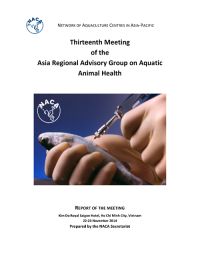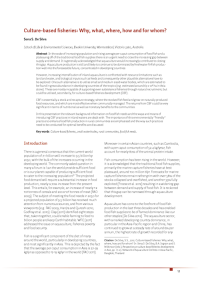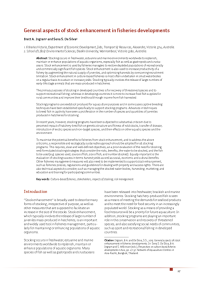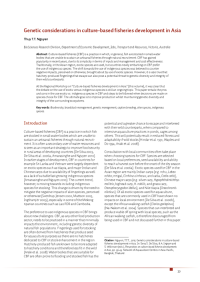The Asia Regional Advisory Group on Aquatic Animal Health meets annually to discuss regional health issues including emerging disease threats. This report includes a review of regional disease status circa 2014, global and regional disease reporting arrangements, global issues and standards, progress in implementation of the the Regional Technical Guidelines on Health management for the Responsible Movement of Live Aquatic Animals, identification and designation of regional aquatic animal health resources and regional and international cooperation.
The 26th meeting of the NACA Governing Council was hosted by the Government of Indonesia in Bali, from 5-7 May in the Inna Grand Bali Beach Hotel. Sixteen member governments attended, as well as representatives from four NACA Regional Lead Centres, the Food and Agriculture Organization of the United Nations, the Southeast Asian Fisheries Development Center and the Secretariat of the Pacific Community.
CBF is essentially a stock and recapture strategy, where the stocked fish feed and grow on naturally produced food resources, and which are most effective when communally managed. The returns from CBF could be very significant in terms of nutritional as well as monetary benefits to the communities. In this presentation the relevant background information on food fish needs and the ways and means of introducing CBF practices in inland waters are dealt with.
In recent years, stocking programs have been subjected to substantial criticism due to perceived impact of hatchery-bred fish on genetic structure and fitness of wild stocks, transfer of disease, introduction of exotic species and non-target species, and their effects on other aquatic species and the environment. To maximise the potential benefits to fisheries from stock enhancement a responsible and ecologically sustainable approach should be adopted for all stocking programs.
A shift away from exotic speces towards the use of indigenous ones was believed to counter negative impacts of culture-based fisheries. However, hatchery-produced fingerlings can also pose a potential threat to genetic diversity and integrity of their wild counterparts. This paper entails the pros and cons in the use exotic vs. indigenous species in CBF and steps to be followed when decisions are made on species choice for CBF.



